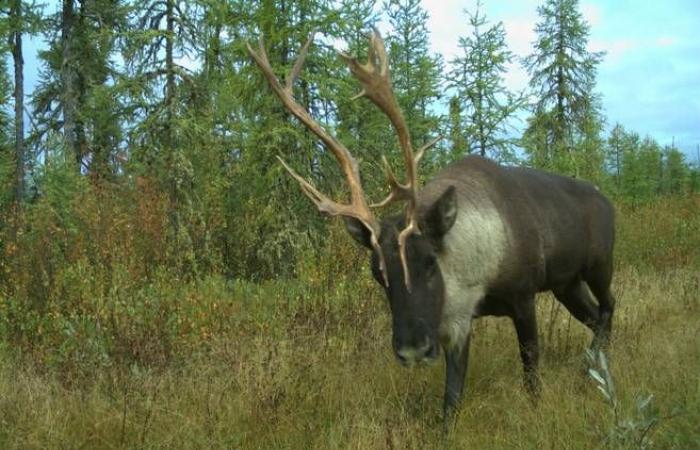At least that is what emerges from the comparisons that can be made between the opinion of the Chief Forester of Quebec of June 18 and the documents already published on the website of the federal Ministry of the Environment. These documents will be released starting July 3 as part of Environment Canada’s 60-day public consultation on the draft decree.
Quebec’s Chief Forester, Louis Pelletier, will have to reassess the loss of forestry opportunities that will result from the Canadian government’s emergency decree on woodland caribou habitat. In its consultation document, the federal government significantly expanded the distribution area of the Pipmuacan herd. (Guillaume Roy/Archives Le Quotidien)
The potential impacts on forestry potential will mainly be felt in the Saguenay and Haute-Côte-Nord sectors.
In this opinion, the Chief Forester of Quebec arrived at a reduction in the forestry possibility of the order of 745,318 cubic metres of softwood in the event of a total ban on forestry operations. He carried out his assessment based on what was known as the federal distribution area of the Pipmuacan herd.
This reduction in forestry potential, according to the economic factors used during the Coulombe Commission, would result in the loss of 2,100 direct, indirect and induced jobs. The repercussions would be felt mainly in Saguenay for the Girard and Lignarex sawmills and the operations of the Forestra cooperative. According to the map published by the Chief Forester, the caribou zone at the origin of his opinion covers nearly 50% of management unit 23-71, which constitutes the historical supply unit of the Saguenay forest industry.
The Chief Forester of Quebec used this map to assess the loss of forestry potential in the event of a cessation of operations in the distribution area of the Pipmuacan woodland caribou herd. In this case, these are the former limits of the herd.
The map published in the consultation document prepared by Environment and Climate Change Canada for the emergency order on the protection of the habitat of the Pipmuacan woodland caribou. This new map draws much larger limits for the distribution area of this herd. The impact on the forest potential will therefore be greater than the calculation made by the Chief Forester based on the old delimitation.
Still according to the same map, management unit 93 51 would be largely inaccessible to the forestry industry if Ottawa decrees a complete halt to forestry operations in the distribution area; in this case, these are the historic supply areas for the Boisaco group and, to a lesser extent, Arbec.
The document entitled Working Document: Proposed Scope of an Order under Section 80 of the Species at Risk Act to Ensure the Protection of Caribou, Boreal Population The federal government is proposing a new map of the Pipmuacan herd’s range. These new boundaries are based on telemetry data from radio collars worn by females in this herd. This new map looks strangely similar to the map of the territory inventoried in 2020 by the Quebec government.
Environment and Climate Change Minister Steven Guilbeault will impose an emergency decree for the protection of three caribou herds if Quebec does not present additional protection measures. (Sean Kilpatrick/Canadian Press Archives)
It is not possible at this time to know the difference in forest potential losses between the two maps. We will have to wait for a new assessment by the Chief Forester with the new map data, but the area is larger, which means that the loss of possibilities will be greater than what has already been announced.
The twenty-page document that details the various aspects of this consultation, which began on June 18 and will end in August, states the imminent dangers weighing on the herds of Charlevoix, Gaspésie and Pipmuacan. The comments made by officials to justify this intervention mainly concern the recruitment rate of the herds.
The rate of calves per female in herds has reached levels that the Canadian government considers too low. The forest industry is, according to the content of the document, largely responsible for this situation.
The industry builds roads to access forest areas, making it easier for predators like bears to move through these areas and prey on fawns at or near birthing sites.
The decree will provide for activity levels on the territory. These levels range from a complete halt to logging across the entire territory to limitations based on the quality of forest caribou habitats.
In 1973, the Quebec government estimated the loss of forest potential at 3 million cubic metres with the application of the federal standard of a maximum of 35% disturbance in the range of the woodland caribou. This drop, still according to the assessment at the time, caused the disappearance of 9,000 jobs. The latest assessment by the chief forester is 14 million cubic metres and is based on the complete withdrawal of forest potential from the range of herds that evolve in the forest under management.






